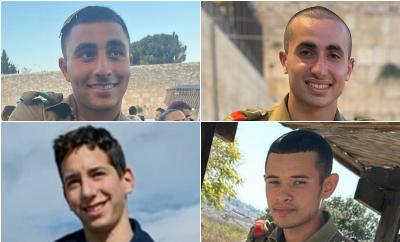Share
Human Rights Voices
While the UN devotes its human rights operations to the demonization of the democratic state of Israel above all others and condemns the United States more often than the vast majority of non-democracies around the world, the voices of real victims around the world must be heard.
Lebanon, October 14, 2024
Four Israeli soldiers killed, 58 injured in Hezbollah drone strike on military base
Original source
Four IDF soldiers were killed and 58 others were wounded by a Hezbollah drone strike on a military base near Binyamina in north-central Israel on Sunday night.
The attack was claimed by Hezbollah, which said that it had targeted a training base belonging to the IDF’s Golani Brigade with a “swarm of drones.” The Lebanese terror group touted the deadly attack as proof of its ability to strike Israel even as the military forges ahead with its ground operation against Hezbollah in south Lebanon.
The drone impacted shortly before 7 p.m., the IDF said. Hebrew media reports indicated that it struck a dining hall as the troops were gathering to eat inside the base.
The four soldiers killed in the attack were named on Monday as Sgt. Alon Amitay, Sgt. Omri Tamari, Sgt. Yosef Hieb, and Sgt. Yoav Agmon. Seven more soldiers were seriously wounded, the IDF said, and another 14 were suffering from moderate injuries.
In a statement shortly after midnight, IDF spokesman Rear Adm. Daniel Hagari said that the circumstances surrounding the incident were being examined, as the drone had failed to set off any warning sirens in Israel.
“The IDF has full operational control over the incident,” Hagari said, urging the public to refrain from spreading rumors about the attack while the facts were still being established.
“We will investigate how a UAV can breach without warning and hit a base,” he said. He added that Israel has faced the threat posed by UAVs “since the beginning of the war.”
“We are required to provide better protection,” he said. “We will investigate this incident, learn from it and improve.”
An initial probe into the attack indicated that two drones launched by Hezbollah entered Israeli airspace from the sea, the Times of Israel learned. Both were “Mirsad” drones, known in Iran as the Ababil-T. The model is Hezbollah’s main suicide drone, and their use was not unique or unprecedented.
According to the Alma Center, an Israeli research institute focused on security challenges in the north, the drone has “a 120-kilometer assault range, a top speed of 370 kilometers per hour, the capacity to carry up to 40 kilograms of explosives, and the ability to fly at altitudes of up to 3,000 meters.”
Both were tracked by Israeli radars, and one was shot down off the coast north of Haifa. Sirens sounded in the western Galilee area.
IAF planes and helicopters pursued the second drone, but it dropped off the radar and Israeli forces lost track of it, likely because it flew very close to the ground. No siren sounded because the assumption was that it had crashed or been intercepted once it disappeared.
The Magen David Adom ambulance service said that it had coordinated with IDF medical teams to provide the injured with treatment at the scene of the strike before transferring them to hospitals around the country.
Most of the injuries were caused by shrapnel, although the ambulance service said it also treated nine people for acute anxiety.
Footage from the scene showed a line of ambulances and a helicopter arriving to evacuate the injured.
Most of the wounded were taken to Hillel Yaffe Medical Center in Hadera for treatment, and others were evacuated to Sheba Hospital in Ramat Gan, Ramban Hospital in Haifa, and Rabin Medical Center in Petah Tikva.
Sunday’s attack followed an incident on Friday night when a drone from Lebanon hit a retirement home in the central Israel city of Herzliya. There were no injuries in that attack.
In total, the military said that more than 115 projectiles were fired by Hezbollah into Israeli territory on Sunday in addition to the drones, periodically activating sirens in the Haifa area and throughout the Galilee.
No injuries were reported in any of those attacks.
Following Sunday night’s drone strike, Hezbollah threatened Israel with more attacks if its offensive in Lebanon continued.
Hezbollah “promises the enemy that what it witnessed today in southern Haifa is nothing compared to what awaits it if it decides to continue its aggression against our… people,” it said.
It claimed that it had carried out a “complex” operation by launching dozens of missiles towards Nahariya and Acre to the north of Haifa “with the goal of keeping Israeli defense systems busy.”
The rocket barrages enabled the drones to “get past Israeli defense radars without being detected,” the terror group said, adding that a drone then “exploded in the room where dozens of officers and soldiers of the Israeli enemy were present.”
Despite the drone strike, the Home Front Command announced on Sunday evening that it relaxed its instructions for parts of northern Israel.
The southern Golan moved from a “limited activity level” to a “partial activity level.”
Further south, the area of Afula, Mount Tabor, the Gilboa mountain range, the Beit Shean Valley, Megiddo, and Yokneam moved to a “full activity level with a limitation of gatherings and services of up to 2,000 people,” the army said.
The Wadi Ara region, where the Hezbollah drone struck, also received clearance to return to a full activity level.
It remained unclear how the drone strike would affect the new guidelines...

